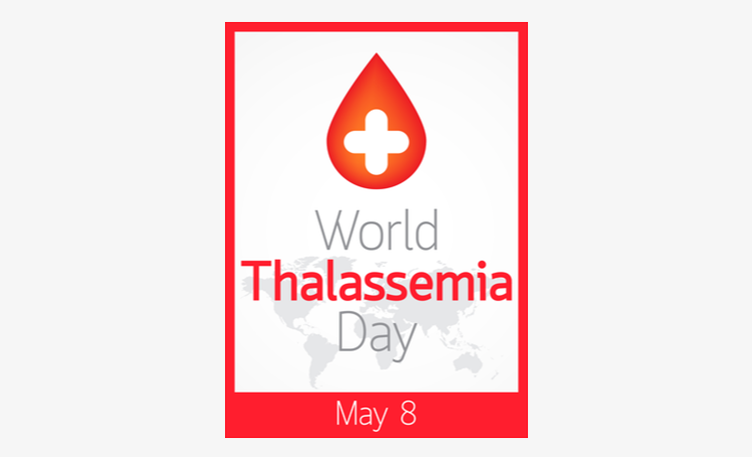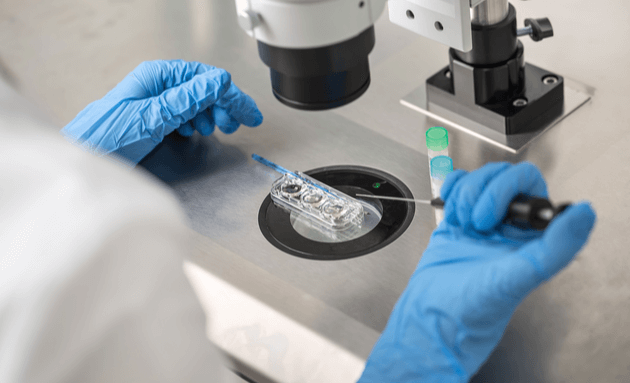
World Thalassemia Day 2019 - All You Need To Know About Thalassemia in India
Thalassemia is an inherited blood disorder that affects your body’s ability to produce Haemoglobin - the substance that gives your red blood cells the ability to hold and transport oxygen across your body.
Thalassemia comes from the Greek word Thalassa, which means ‘sea’, and the Latin word ‘emia’, which means blood. Commonly found in countries like Asia and Africa, this rare genetic blood disorder was popularly called Mediterranean Anemia due to the fact that its earliest reported cases were first diagnosed in Mediterranean countries like Greece and Turkey.
The disease now affects the lives of more than 5% of India's population and has proved fatal in many cases. Thalassemia is especially common in young Indians who stand the highest risk of contracting this rare disease. Here’s what you need to know about Thalassemia.
Understanding the Causes of Thalassemia
For ages, Thalassemia was attributed to the primitive and orthodox belief that it was a divine punishment meted out to children of sinful parents.
Thalassemia is, however, actually caused due to mutations in the DNA of the haemoglobin-producing cells in our body and is passed on from parents to children.
There are two main types of Thalassemia,
- Alpha Thalassemia - occurs when your gene related to the alpha globin protein (a subunit of haemoglobin) is missing or mutated.
- Beta Thalassemia - occurs when gene defects affect the production of the beta globin protein, which is also a subunit of haemoglobin. Based on the severity of the gene defect, you can suffer from -
- Thalassemia Major - occurs when the child inherits two mutated genes from the parents. Their inability to produce normal haemoglobin leads to extreme fatigue and children suffering from Thalassemia major usually show signs of severe anaemia in the first year of their lives.
- Thalassemia Minor - People suffering from Thalassemia minor have a Thalassemia trait in one gene and are referred to as carriers. 3-4% of the Indian population are carriers of this condition and the only way to know if you’re a carrier is to undergo a specialised blood test called Haemoglobin electrophoresis that identifies the carrier gene.
If you or your parents show traits of Thalassemia, it is best to consult a doctor at the earliest.
Understanding the Symptoms of Thalassemia

The early signs and symptoms of Thalassemia may include:
- Weakness and fatigue
- Facial bone deformities
- Pale skin
- Dark urine
- Abdominal swelling
- Slow patterns of growth
- Reduced bone mass, or Osteopenia
Living with Thalassemia
While medical research and clinical trials are in the pipeline to improve the quality of living for patients with Thalassemia as well as to find a long term cure for the disease, the average thalassemic will usually face challenges like -
- Struggle to lead normal lives and continuously experience frequent episodes of tiredness and fatigue due to their low haemoglobin levels.
- Suffer from diseases like Anaemia, borne out of their iron deficiencies and commonly have pale skin, suffer from frequent infections and issues of the spleen and bone.
- Continuously require frequent blood transfusions to fortify their haemoglobin levels.
How is Thalassemia Diagnosed?

Most children with Thalassemia show signs and symptoms in the first two years of their life. In case your doctor suspects Thalassemia, a blood test will be administered to check:
- Low levels of red blood cells
- Red blood cells that are smaller and different in shape and size
- Pale red blood cells
- Uneven distribution of haemoglobin in the red blood cells, which makes it look like the “bull’s eye” under a microscope
The blood tests may also help reveal:
- Iron content in your child’s blood
- Status of haemoglobin production
- If a person is carrying a mutated gene (with the help of DNA analysis)
If you, your partner, or both have a Thalassemia Minor trait, there are 25% chances of your child being a Thalassemia Major.
Other diagnosis methods include:
- Prenatal Testing: Before a baby is born, prenatal testing may be suggested to find out if the baby is carrying any mutated genes or not. Procedures employed to test fetuses are:
- Chorionic villus sampling - Involves the removal and evaluation of a small amount of placenta (usually done in the 11th week of pregnancy).
- Amniocentesis -Involves the collection and testing of a small sample of the fluid surrounding the fetus (usually in the 16th week of pregnancy).
Get tested, and explore #AadhiwaliZindagiMitao and give your children the full life they deserve.
Is Thalassemia Curable?
While Thalassemia used to be a fatal disease in the past, recent advancements in technology and medical research have made the disease quite manageable.
Treatment options for Thalassemia depend on the status and type you or your child has. The most sought after treatment procedures for mild to severe Thalassemia include:
- Frequent blood transfusion.
- Stem Cell Transplant, also known as Bone Marrow Transplant.
Parents who carry mutated genes can also use Assisted Reproductive Technology - a technique that combines in vitro fertilisation with preimplantation genetic diagnosis to give birth to healthy babies.
Managing Thalassemia at Home

Thalassemics can improve the quality of their lives by making the following lifestyle changes in conjunction with their prescribed medication plan.
- Follow a healthy diet: Nutritious food that is rich in folic acid, calcium, and Vitamin D can help you stay energised and make you feel better. Consult your doctor for the right amounts for every nutrient and check before you opt for any supplements.
- Protect yourself from infections: Wash your hands regularly, and steer clear of people who have the flu or any seasonal infections. You may also be advised to take an annual flu shot, along with other vaccines to prevent infections.
- Avoid excess iron: Unless recommended, avoid taking any iron or vitamin supplements. This is because Thalassemics are often prone to suffering from an over-accumulation of Iron in their bodies (Iron Overload), caused due to regular blood transfusions that can heighten their risk of contracting liver diseases like hepatitis, fibrosis (liver scarring) and cirrhosis (long term liver damage) as well as run the risk of heart failure (Arrhythmia).
Warm and supportive relationships, exercise, and regular treatment can help a person manage Thalassemia. Help a loved one suffering from Thalassemia by offering them a ride during a blood transfusion, remind them about their appointments or just be around if they need some emotional support to deal with the everyday challenges of this debilitating disease.

